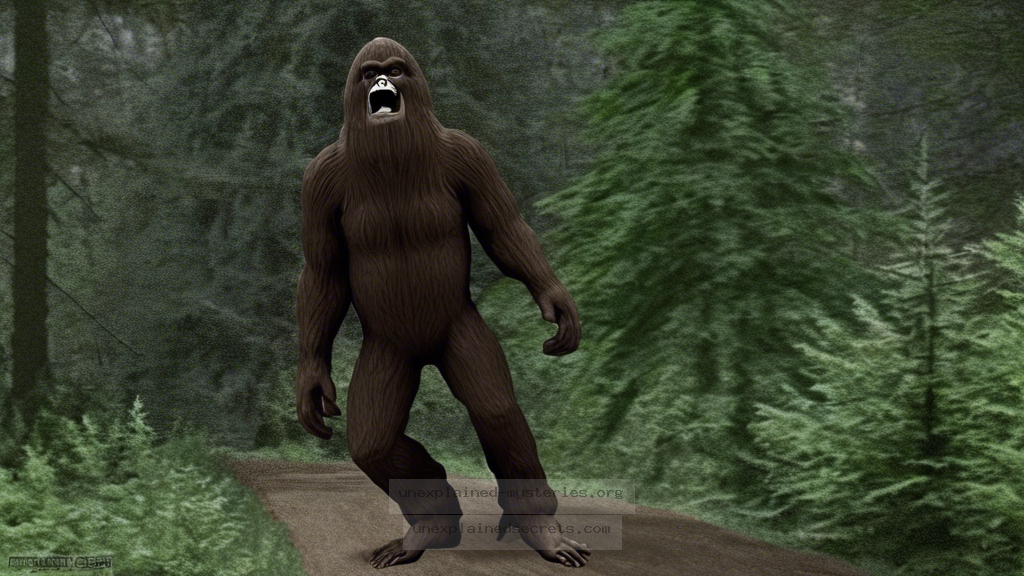What Makes the 1967 Patterson-Gimlin Film the Most Compelling Evidence for Bigfoot’s Existence?
What Makes the 1967 Patterson-Gimlin Film the Most Compelling Evidence for Bigfoot’s Existence?
The Patterson-Gimlin film, captured on October 20, 1967, remains one of the most debated and compelling pieces of evidence in the quest to prove the existence of Bigfoot. This iconic footage, showing a large, bipedal creature walking through the woods of Bluff Creek in Northern California, has sparked countless discussions among cryptozoologists, skeptics, and enthusiasts alike. Why does this film continue to intrigue and polarize people nearly six decades later? In this blog post, we will delve into the historical context, the science behind the film, alternative theories, and the implications it has for the study of cryptozoology. Let’s embark on this exploration to uncover what makes the Patterson-Gimlin film such a pivotal artifact in the Bigfoot narrative.
Historical Context of the Patterson-Gimlin Film
The Patterson-Gimlin film was recorded by Roger Patterson and Robert Gimlin during an expedition in search of Bigfoot. The two men, both avid outdoorsmen, had already heard numerous accounts of Bigfoot sightings in the area. The film’s origin is rooted in the folklore and cultural narratives surrounding Bigfoot, which have existed in various forms across North America for centuries, often referred to as Sasquatch by Indigenous tribes.
On that fateful day in October, Patterson and Gimlin were riding horses in a secluded area when they reported seeing a creature that matched the descriptions of Bigfoot. They hastily set up their camera and captured approximately 60 seconds of footage that would go on to be scrutinized for decades. This historical moment not only brought attention to Bigfoot but also established a cultural phenomenon that sparked interest in cryptozoology as a whole.
Breaking Down the Film: Frame by Frame
The Patterson-Gimlin film is 16mm in color and runs for about 59.5 seconds, featuring a creature that appears to be walking smoothly and effortlessly through the forest. The analysis of this film has been extensive, with both supporters and skeptics dissecting each frame.
- Movement: The creature displays a distinctive gait that some argue is too fluid for a man in a costume. The arm swing and pelvic movement resemble that of a primate rather than a human.
- Physique: Observers have noted the creature’s muscular build, which seems inconsistent with typical human characteristics. Its height is estimated to be around 7 to 8 feet, with broad shoulders and a conical head.
Despite numerous attempts to replicate the creature’s walk and appearance, no one has convincingly duplicated it, which raises questions about whether the footage could be a hoax. The film remains a focal point for those arguing for the existence of Bigfoot.
The Scientific Community’s Reaction
The scientific community has had a mixed reaction to the Patterson-Gimlin film. Many experts have approached the footage with skepticism, citing the lack of physical evidence, such as bones or hair samples, to support the existence of Bigfoot. Additionally, some researchers argue that the film could easily be a well-executed hoax.
However, several scientists have taken the film seriously. For instance, Dr. Jeff Meldrum, a primate anthropologist, has analyzed the film and argued that it shows characteristics consistent with a hominid. His studies have focused on the footprints found in the same area, which he believes indicate a creature that is not human.
Comparing Other Sightings and Evidence
The Patterson-Gimlin film is not the only evidence supporting the existence of Bigfoot. Numerous sightings and reports have emerged over the years, each contributing to the mystery. For example, the 1924 “Battle of Ape Canyon” incident in Washington State involved miners who claimed to have been attacked by a group of Bigfoot-like creatures.
Comparing these accounts to the Patterson-Gimlin film reveals several commonalities:
| Aspect | Patterson-Gimlin Film | Other Sightings |
|---|---|---|
| Creature Description | Large, bipedal, covered in hair | Similar descriptions across various reports |
| Behavior | Walking smoothly, seemingly unconcerned | Often described as elusive or aggressive |
| Location | Remote forested area | Generally in wilderness areas |
This comparative analysis underscores a pattern in the sightings, suggesting that the Patterson-Gimlin film may not be an isolated incident but rather part of a more extensive phenomenon.
Alternative Theories: Hoax or Real?
While many enthusiasts defend the Patterson-Gimlin film as authentic, others propose that it is a hoax. Detractors point to inconsistencies in the story of Patterson and Gimlin and claim that they had motives for fabricating evidence. Some have even suggested that the suit used in the film was designed by special effects experts, although no convincing evidence has surfaced to support this claim.
Furthermore, skeptics argue that the film’s quality and the absence of comprehensive forensic evidence contribute to its status as dubious. While some have attempted to recreate the film using costumes, these recreations have often failed to capture the creature’s unique gait and physicality.
Common Misconceptions About Bigfoot
As interest in Bigfoot continues to grow, so do the misconceptions surrounding its existence. Here are some common myths:
- Bigfoot is just a myth: While there is no scientific consensus, many cultures have rich traditions involving large, ape-like creatures.
- All sightings are hoaxes: Not all reports can be dismissed; some come from credible witnesses, including law enforcement and park rangers.
- The Patterson-Gimlin film has been definitively proven to be fake: Although many have argued against its authenticity, no final consensus has been reached.
Understanding these misconceptions can help clarify the ongoing debate surrounding Bigfoot and the Patterson-Gimlin film.
Best Practices for Investigating Bigfoot Sightings
If you find yourself interested in investigating Bigfoot sightings, here are some best practices to follow:
- Research Thoroughly: Understand the history of sightings in the area you plan to investigate. Familiarize yourself with the local geography and wildlife.
- Document Everything: Keep a detailed log of your findings, including photographs, sketches, and audio recordings.
- Stay Skeptical: While enthusiasm is important, maintain a critical eye towards all evidence, including your own.
- Collaborate with Experts: Engage with cryptozoologists or researchers who have experience in the field.
Future Developments and Ongoing Research
The quest for Bigfoot continues, with advances in technology playing a pivotal role in ongoing research. Drones, thermal imaging, and advanced tracking methods are being employed to gather evidence in ways that were previously impossible. Genetic testing of hair samples and environmental DNA (eDNA) analysis are also paving the way for more scientific inquiries into the existence of elusive creatures.
As the Patterson-Gimlin film remains a focal point, many researchers are hopeful that new technology will either confirm or debunk the existence of Bigfoot once and for all. Whether the creature is out there or simply a figment of folklore, the fascination with Bigfoot persists and continues to evolve.
Conclusion: The Legacy of the Patterson-Gimlin Film
The Patterson-Gimlin film stands as a testament to humanity’s enduring curiosity about the unknown. Regardless of where one stands on the existence of Bigfoot, the film has undoubtedly sparked interest in cryptozoology and the mysteries of our natural world. With ongoing research, technology, and passionate investigators, the journey to uncover the truth about Bigfoot continues. The film reminds us that sometimes, the most compelling evidence lies not just in what we see, but in the stories we tell and the mysteries we dare to explore.
Other Articles
What Happened to the Elusive Thylacine: Is It Really Extinct?
What Happened to the Ghosts of the RMS Queen Mary?
Recent Posts
- What Happened to Flight MH370? The Conspiracy Theories That Still Haunt Us
- What Secrets Lurk Within the Walls of the Infamous Trans-Allegheny Lunatic Asylum?
- What Evidence Supports the Existence of Bigfoot in the Pacific Northwest?
- What Happened to the Indus Valley Civilization? Unraveling the Mysteries of Ancient Urban Life
- Can Telepathy Be Scientifically Proven Through Laboratory Evidence?







